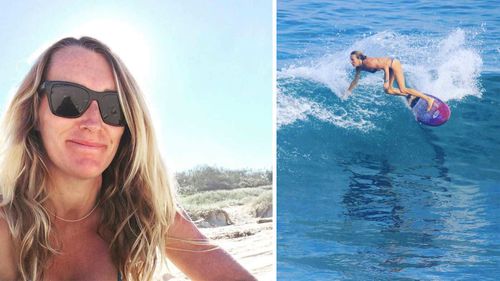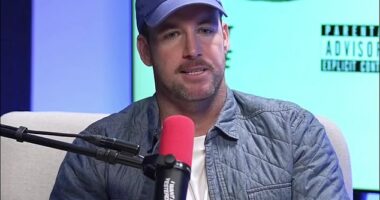Jenny Hellyer had just spent an ordinary Saturday at the beach with her family in January when her life took an unexpected turn.
The avid surfer and mum-of-two said everything changed in the two-minute car ride back from the beach to her home in the Northern Rivers region of New South Wales.
“My husband was driving and I was in the passenger seat, so I didn’t notice anything at first,” Hellyer said.

Hellyer, 43, couldn’t feel it, but a paralysis was creeping through her right leg.
“When I went to get out of the car, my leg collapsed underneath me,” she said.
“It felt like my leg was a flag flapping in the breeze, like it wasn’t connected to my body at all.
“I tried to take a few steps and I just couldn’t walk.”
Hellyer said she was struggling to understand what was going on.
“Nothing was making sense. I was thinking maybe it was a tic or a snake bite. I was trying to work it out,” she said.
From there, Hellyer began to experience more alarming symptoms.
“Half my face was numb, it felt like I had just been to the dentist, and I had this really strong metallic taste in my mouth,” she said.
Hellyer realised it was the right side of her body that was affected.
“I wondered if it could be a stroke, but then I thought no, it can’t be, I’m too young,” she said.
Hellyer’s family helped her inside, where she immediately began Googling her symptoms, which all seemed to suggest she had, in fact, had a stroke.
“I turned to my husband and said I think I’ve had a stroke, I need to get to hospital,” she said.
Hellyer said she could remember not being able to think clearly about how to get to the hospital as the brain fog set in.
Her husband stepped in and called an ambulance, with paramedics taking her to Lismore Base Hospital.
An MRI scan confirmed Hellyer had suffered two major strokes and several mini-strokes, most likely on the same day.

Hellyer spent the next few weeks at the hospital slowly regaining the use of her leg and relearning to walk.
The mum-of-two then spent a further two weeks in a rehab program in Ballina.
As well as regaining the use of her leg, she has also had to contend with the cognitive impact of her stroke.
“The second stroke was in my language area, which has meant I’ve had difficulties losing words,” Hellyer said.
“The hardest part would have been coming home, with a brain injury,” she said.
“I felt like a foreigner in my own home. It would take me an hour and a half to unload four bags of shopping because I couldn’t process where everything should go.”
While it had been a long road to recovery, Hellyer said she was now doing well, and had even managed to get back on the surfboard.
Most of her friends and family were stunned when she broke the news about her stroke, she said
“The most common response I get is, ‘but you’re so fit and healthy’,” she said.
In Hellyer’s case, doctors discovered a small hole in her heart she was born with, as well as a blood clotting disorder, both of which increased her risk of stroke.
Hellyer is one of around 27,500 Australians to have had a stroke for the first time in the last year.
There are more than 445,000 people nationwide living with the effects of stroke, according to a 2020 Deloitte Access Economics report on strokes.
Stroke Foundation Chief Executive Officer Dr Lisa Murphy said there was a misconception that strokes only happened to older people, but this was not true.
“Stroke does not discriminate – it can happen to anyone, at any age,” she said.
“Although the risk of experiencing a stroke increases as we get older, around 1 in 4 strokes happen to young and working-age people.”
Murphy said many people still did not know how to spot a stroke.
“Concerningly, only 31 per cent of Australians are aware of two or more of the common signs of stroke.
“This means one in three people might not recognise if they are or someone else is having a stroke which could delay calling triple zero (000) and getting time-critical treatment.”
How to know if someone is having a stroke
The Stroke Foundation recommends the F.A.S.T. test as an easy way to remember the most common signs of stroke.
Using the F.A.S.T. test involves checking for these telltale signs:
-
Face – Check their face. Has their mouth drooped?
-
Arms – Can they lift both arms?
-
Speech – Is their speech slurred? Do they understand you?
-
Time Is critical. If you see any of these signs call triple zero straight away.
Other signs of a possible stroke include weakness, numbness or paralysis of the face, arm or leg on either or both sides of the body. Dizziness, loss of balance or vision, a headache or difficulty swallowing can also be symptoms.








